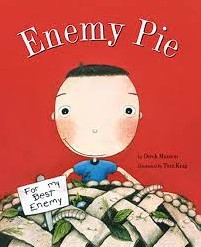
A few days ago, a photo memory popped up on my phone from a few years ago of my older kids doing a Valentine’s themed activity. I remembered it being a lot of fun for them, and remembered it being super easy to set up. I tucked the memory back into my mind, thinking that if I had time in the next few weeks, I’d set it up for my preschool aged kids. Well, as luck would have it, neither of those kids have school on Mondays, and we were all going a little stir crazy yesterday, so off to the craft store we went, returning with a pack of pipe cleaners. A few minutes later, my kids were happily playing!
The concept is simple: form several pipe cleaners into hearts and toss them in a pile on the floor. Give your kids some different objects that they can use to pick the hearts up— things like straws, plastic forks, tongs, chop sticks, popsicle sticks, clothes pins, etc.— and watch them go! Having them simply pick up the hearts is the most basic task with this activity. There are also many other variations, such as:
- Assign a color and have them work on only picking up that color. Provide papers that match the colors of the hearts and have them sort the hearts onto the pieces of paper. This is great for color recognition and matching.
- Have them transfer the hearts from one place to another. This helps with hand-eye coordination.
- After they pick up each heart, have them create a pattern. Early math skills are in play here as they figure out a pattern to make.
- See how many hearts they can fit onto their pick up tool, without any falling off. They can count their hearts once their tool is full.
- Have them stack their hearts as they collect them, seeing how tall their stack can get before falling over.


As I watched my kids play with this super simple activity, I got thinking about some other activities I have done in the past when my older kids were preschool age. Most of these activities can be set up with little effort, and require materials that you may have around the house (or can buy for very cheap at the dollar or craft store).
Pipe Cleaner Beading
Give your child a pipe cleaner and a handful of pony beads. Have them put the beads onto the pipe cleaner. This encourages fine motor hand-eye coordination. They can also create patterns, count their beads, and name colors as they go.

Paper Heart Sort
Using whatever paper you have on hand, cut out hearts of varying sizes and colors. Have your child sort them from largest to smallest, smallest to largest, or by color if you have more than one color of paper. Again, kids can count hearts, make patterns, and recognize colors as they work through this activity.

Valentine Necklace
Cut a heart out of craft foam or felt and attach a piece of yarn, ribbon, or string of some kind. Give your child a bunch of pony beads and have them make a necklace. As with other activities, this one also allows for kids to work on small motor hand-eye coordination, counting, patterning, counting, and color recognition.

Another great thing about these activities is that they are practically mess free! There’s no cutting, gluing, or coloring. Sure, the beads could spill, but that’s about the biggest mess that could come from all of these activities! Pro-tip, though— if you do the bead activities, have your child sit on the floor. That way, if the beads do spill or drop, they aren’t going to bounce all over your kitchen floor.
Not only are these not very messy, they are also great activities for promoting several learning skills and coordination skills. And, as a bonus, mom or dad might get a little break for a minute while the kids play and learn!
Let us know in the comments if you use any of these with your kids or class!















